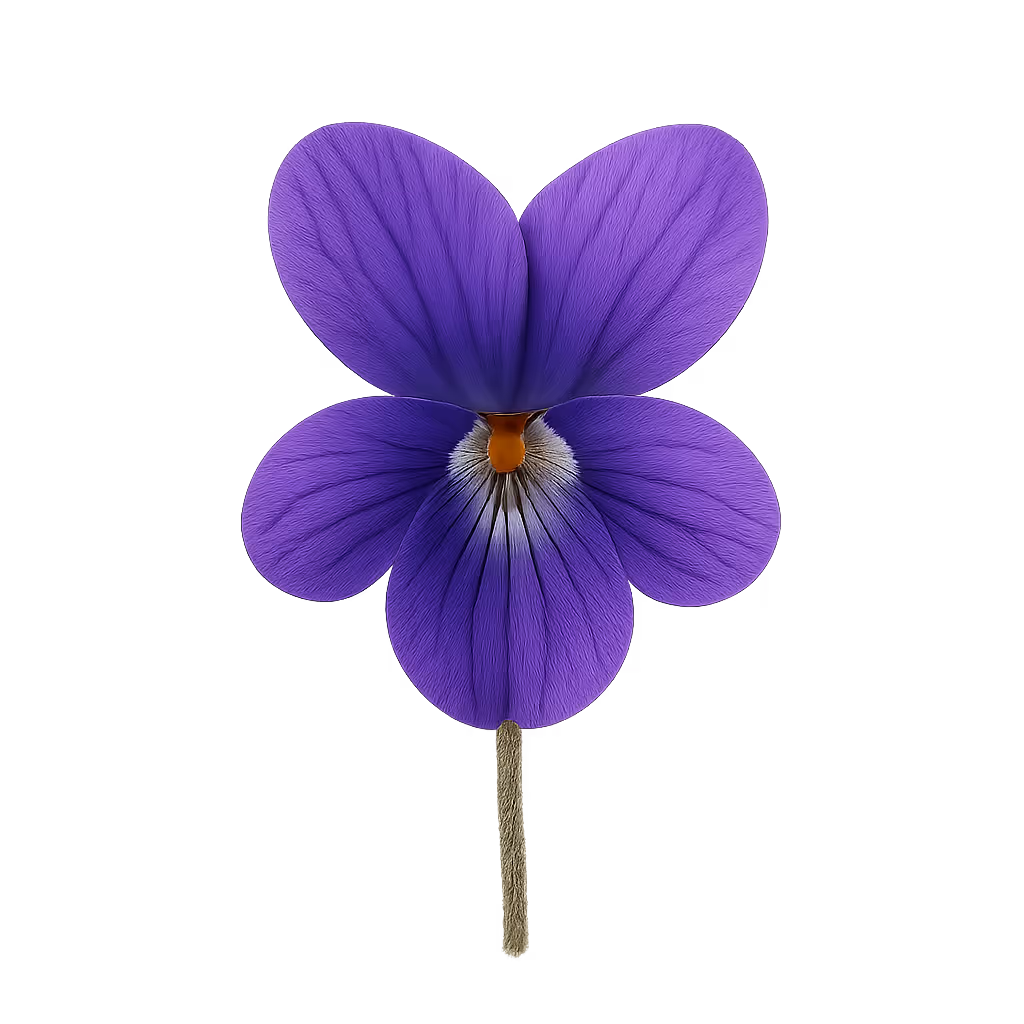

In Perfumery Violet absolute is prized for its powdery floral character and nuanced green facets that evoke secret twilight gardens in full bloom.
The Violet note is derived primarily from the fragile petals of Viola Odorata and Violet leaves often cultivated in the Alpine regions of France and Bulgaria. Historical enfleurage methods required thousands of petals to produce just one gram of absolute, while modern supercritical CO₂ extraction preserves delicate ionones—particularly alpha-ionone and beta-ionone—and lactones without heat damage. Synthetic Violet leaf MNA complements natural extracts by amplifying green facets and extending longevity.
On application the Violet accord reveals a talc-like powdery top note reminiscent of freshly milled Violet petals kissed by morning dew. Subtle green undertones emerge like crushed violet leaves adding crisp contrast. As the heart develops, sweet heliotropic nuances akin to vanilla-almond cream and faint honeyed facets unfold, rounding the floral sweetness. The dry down introduces soft musks and warm, dry woody notes such as Sandalwood and Cedar, anchoring the scent in a lingering veil of floral powder that softly clings to skin for hours.
In contemporary perfumery the Violet note lends refined powdery elegance to both feminine bouquets and unisex compositions. It blends harmoniously with Rose, Peony, and Jasmine to create romantic floral accords, while addition of iris orris root deepens the earthy floral complexity. Gourmand interpretations see Violet paired with Vanilla, Tonka bean, and caramelized sugar for creamy, powdery gourmand accords. Perfumers sharpen top notes with green accents like basil, kaffir lime, or Violet leaf accord, or introduce ozonic aldehydes for a modern aquatic twist. Avant-garde creations fuse Violet with smoky Iris resin and Leather to craft leather-floral Chypres that defy convention. Iconic fragrances such as Guerlain Après l’Ondée and Serge Lutens Feminité du Bois exemplify Violet’s versatility across eras.
Violet flowers have symbolized modesty, love, and devotion since antiquity. Ancient Greeks associated Violet with poetic inspiration and daydreaming, while Renaissance courts used violet oil to scent manuscripts and textiles. Victorian floriography assigned Violet to messages of loyalty and humility, enabling discreet romantic expression through the language of flowers. This storied heritage enriches Violet’s narrative in modern perfumery, inviting wearers to partake in a fragrant tradition that spans centuries.
Genuine Violet absolute remains one of perfumery’s most precious ingredients due to low extraction yields, approximately 4,000 kg of petals are required for 1 kg of absolute—and its delicate chemistry. European grades vary between the French “Parme” variety with a softer Violet leaf facet and the Bulgarian cultivar noted for deeper powdery sweetness. Synthetic analogues now achieve high-fidelity recreation of Violet’s signature notes with biodegradable esters and ketones, offering sustainable alternatives without compromising olfactory authenticity.
Violet’s powdery elegance continues to inspire designers and niche houses exploring minimalistic compositions and complex hybrid structures. Recent trends underscore Violet’s role in modern fougères, aquatic florals, and amber-floral masters that combine Violet with modern musk technologies and eco-certified naturals. Its ability to bridge classic romanticism with avant-garde abstraction ensures Violet remains a cornerstone of creative perfumery.
Embracing the Violet fragrance note unlocks a spectrum of olfactory possibilities—from soft powdery petals to fresh green leaf whispers and creamy heliotropic sweetness. Whether used as a heart note in floral bouquets, an accent in gourmands, or the soul of an innovative chypre, Violet invites perfumers and enthusiasts alike to craft scents that whisper secrets of hidden gardens and timeless elegance.
.png)